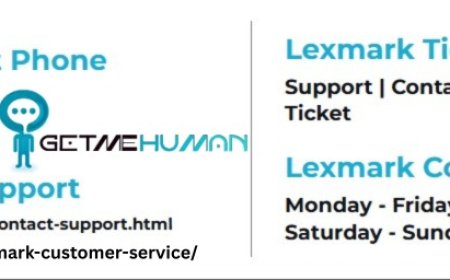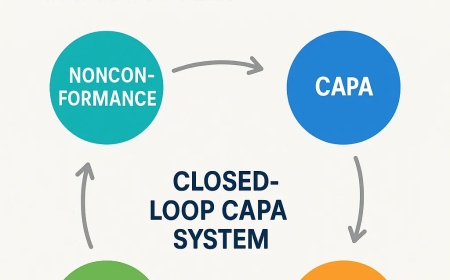What Weaknesses Could a Hacker Find in Your Business Systems?
Uncover hidden vulnerabilities with small business IT solutions and penetration testing. Stay proactive against cyber threats and protect your company.

In todays digital-first world, business operations heavily rely on interconnected systems. While technology enhances efficiency, it equally opens the door to cybersecurity threats. Hackers are not mythical creatures lurking in the shadows; they are strategic individuals or groups actively probing businesses for system weaknesses.
A widespread misconception persists that only large enterprises fall prey to cyber-attacks. In reality, small and medium businesses are increasingly becoming prime targets due to their often less robust security frameworks. This is where small business IT solutions step in, helping firms of all sizes to maintain security resilience.
Penetration testing is another critical component in protecting your systems, simulating real-world attacks to reveal potential vulnerabilities. Understanding exactly where these weaknesses lie is the first step towards fortifying your business systems.
Why Business Systems Are Targeted
Hackers pursue business systems for varied motives. The most obvious is financial gain. Access to sensitive customer data, banking information, and proprietary business processes presents valuable opportunities for exploitation.
Yet many small business owners mistakenly believe they are below the radar. This mindset is dangerous. Hackers often perceive small firms as soft targets precisely because they assume their risk level is lower.
Where a large organisation might have in-house cybersecurity teams and dedicated IT departments, smaller businesses frequently rely on general IT support. Without comprehensivesmall business IT solutions, they may leave gaps wide open for exploitation.

Top Weaknesses a Hacker Looks For
Business systems, particularly in smaller firms, are filled with subtle weaknesses. Identifying and addressing them is essential. Below are the most common vulnerabilities hackers aim to exploit:
Outdated Software & Systems
Running outdated software is akin to leaving your front door unlocked. Software developers release patches and updates to close security gaps. When businesses fail to apply these updates, they leave known vulnerabilities exposed.
From operating systems to third-party applications, outdated software becomes a hackers easiest point of entry. Small businesses often delay updates due to budget or resource constraints, which significantly increases risk.
Weak Password Practices
Passwords continue to represent one of the weakest links in business security. Common bad practices include:
- Reusing the same password across multiple accounts
- Using short or easy-to-guess passwords
- Failing to update passwords regularly
A hacker may employ brute force attacks or simple password-guessing algorithms. The more predictable or repetitive the password, the easier it is to crack.
Lack of Multi-Factor Authentication (MFA)
Multi-Factor Authentication (MFA) provides an extra layer of defence beyond mere passwords. Despite this, many businesses fail to implement it.
Without MFA, even if a hacker obtains login credentials, they can gain immediate system access. With MFA in place, a secondary authentication process (like a text message code) is required, reducing the likelihood of unauthorised entry.
Poor Network Configurations
Many business networks are set up with convenience in mind rather than security. This can result in:
- Open ports that do not need to be active
- Improperly secured Wi-Fi access points
- Flat network structures without proper segmentation
Hackers scan for these easy-to-exploit openings. Ensuring a secure, segmented, and monitored network is a non-negotiable aspect of small business IT solutions.
Inadequate Access Controls
Not every employee needs access to every part of your business system. However, many businesses fail to enforce role-based access controls. This creates unnecessary risk, as even a single compromised user account can lead to broader system infiltration.
Access controls should be granular and reviewed regularly. Temporary staff and third-party contractors should have time-limited or project-specific access only.
Lack of Penetration Testing
Penetration testing, also known as ethical hacking, involves simulating attacks on your business systems to find weaknesses before a real hacker does.
Many small businesses skip penetration testing, believing it unnecessary or too expensive. In truth, it is an investment in proactive protection.
Without penetration testing, unseen vulnerabilities may persist, leaving your systems exposed to opportunistic cybercriminals.
Why Small Business IT Solutions Matter
Cybersecurity is not just a concern for multinational corporations. Small businesses face equal, if not greater, risk due to limited resources and expertise. Small business IT solutions offer tailored services specifically designed for these needs.
Rather than relying on generic security software, small business IT solutions integrate various components such as:
- Network monitoring
- Software patch management
- Access control systems
- Data backup and recovery services
One of the most important services within these solutions is penetration testing. By conducting regular penetration testing, businesses can pinpoint exactly where their defences fail, allowing for timely fixes.
This integrated approach ensures that every layer of a businesss IT infrastructure is accounted for, reducing risk and boosting confidence in daily operations.
How to Identify Weaknesses Effectively
Addressing potential vulnerabilities requires a structured approach. Below is a recommended process:
Step 1: Conduct a System Audit
Begin by cataloguing all hardware, software, and network resources. Understand exactly what needs protection before implementing any measures.
Step 2: Assess Password Policies and Access Controls
Review all password practices. Ensure multi-factor authentication is in place. Validate access control lists to limit unnecessary user permissions.
Step 3: Engage in Regular Penetration Testing
This step cannot be overstated. Hiring professionals to attempt breaking into your system under controlled conditions highlights weaknesses you may never have considered. Penetration testing ensures that theoretical vulnerabilities are tested in practice.
Step 4: Monitor Network Traffic
Unusual patterns in network traffic can indicate an active breach or vulnerability. Employ tools that detect anomalies and alert system administrators immediately.
Step 5: Review and Update Security Policies
Make cybersecurity policy reviews a routine part of business operations. As threats evolve, so too must your defensive strategies.
These steps, when carried out consistently, form a solid foundation for small business IT solutions.

Quick Checklist of Common Weak Points
|
Weakness Area |
Potential Risk |
Recommended Action |
|
Outdated Software |
Exploitable Known Vulnerabilities |
Implement Automatic Updates |
|
Weak Passwords |
Easy Access via Brute Force |
Enforce Strong Password Policies |
|
No MFA |
Single Layer Authentication |
Set Up Multi-Factor Authentication |
|
Poor Network Configuration |
Open Ports, Wi-Fi Insecurity |
Conduct Regular Network Audits |
|
Inadequate Access Controls |
Unauthorised Data Access |
Apply Role-Based Access Restrictions |
|
No Penetration Testing |
Hidden System Vulnerabilities |
Schedule Regular Testing |
Keeping this checklist at hand can help business owners maintain ongoing vigilance.
Conclusion
Business systems, no matter their size, are under constant threat from cybercriminals seeking vulnerabilities. From outdated software to weak passwords and poor network configurations, the list of potential weaknesses is extensive.
By integrating structured small business IT solutions, including critical components like penetration testing, companies can shield themselves against these risks.
The most effective security strategy is proactive rather than reactive. Small businesses must accept that cybersecurity is not optionalits essential. Regular reviews, updates, and tests form the backbone of a secure IT environment.
For tailored services and expert guidance in safeguarding your business systems, Renaissance Computer Services Limited offers comprehensive solutions designed with your needs in mind.




























































